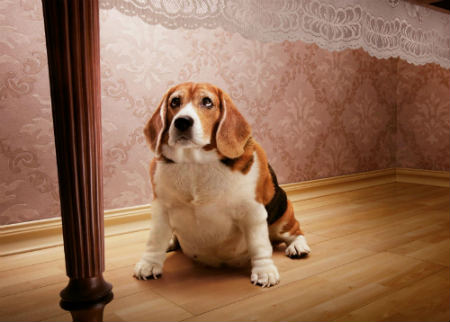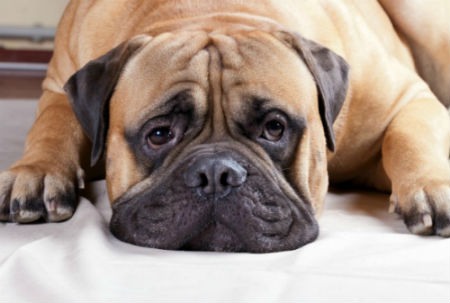
How to help your dog lose weight?
As we already know, dog food and the problems associated with being overweight in dogs have serious consequences for them and have a direct impact on their quality of life and longevity. In addition to this, each breed has its own nutritional needs and its own habits, therefore it is important to know the characteristics of each breed to guarantee the most appropriate diet.
You may be interested in: Guide to the Belgian Shepherd
Check if you are overweight
The first thing we will have to do is determine if our dog is truly overweight. All you need for this is a physical inspection. Because each breed has a different body type, we have to analyze its appearance and take three fundamental aspects as a reference to confirm that the dog is obese and be able to make changes to the dog's diet .- Looking over our dog, we should notice a silhouette or curvature just in front of the hind legs. Likewise, it must present a curvature that defines the difference between the dog's abdomen and chest.
- Looking at one of the sides, you should notice the difference between the volume of the abdomen and the volume of the chest. The dog should have a well-defined waist.
- When the dog has a wide, flattened back and its abdomen hangs, it is a clear indication that it is suffering from obesity.
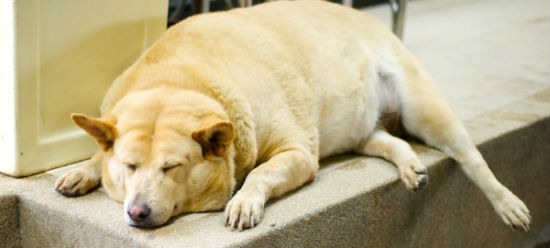 Finally, the most accurate way would be to weigh the dog and compare that weight with a table that specifies the average weight it should have. Of course, these consultation tables present standardized weights, therefore the dog may be somewhat above these values and not suffer from obesity, but obviously the difference is substantial and also the result of the two previous tests does not is correct, then we can confirm that the dog needs to start a diet that includes nutrient-balanced dog food and an exercise routine so that it can lose weight immediately.
Finally, the most accurate way would be to weigh the dog and compare that weight with a table that specifies the average weight it should have. Of course, these consultation tables present standardized weights, therefore the dog may be somewhat above these values and not suffer from obesity, but obviously the difference is substantial and also the result of the two previous tests does not is correct, then we can confirm that the dog needs to start a diet that includes nutrient-balanced dog food and an exercise routine so that it can lose weight immediately.
Develop a meal plan
With the help of your veterinarian, you can develop a dog feeding strategy to help your dog lose weight. This new eating plan may require the inclusion of a type of food specially formulated to promote weight loss. The veterinarian will give you suggestions on the types of snacks and treats that you can give, as well as indicating the size of the portions and the frequency of feeding, as well as the most recommended amount of exercise so that the dog's metabolism begins to activate and begins to lose weight. Dog food has to be rich in nutrients and balanced in portions and calories.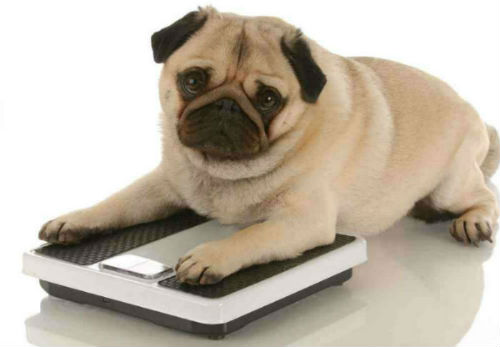
Start executing the eating plan
After consulting and following your veterinarian's instructions, you should begin feeding your dog the specific diet that has been developed for him. Remember that dog food is essential for the proper functioning of their body. This diet can be as simple as reducing the portion of food that the dog receives or combinations of foods rich in fiber that are easy to digest and make your dog feel fuller and not suffer from anxiety due to the lack of the usual portion of food. .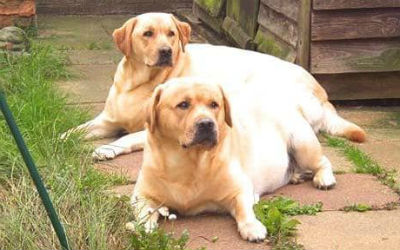
Tips and advice to help your dog overcome obesity
- Reduce the amount of treats and unhealthy foods . The vast majority of dog treats that are marketed are very rich in calories, being very similar to the treats that people eat. There are certainly low-calorie treats, but if you want your dog to lose weight you need to replace the treats with healthy and more appropriate snacks in dog food. For example: carrots, broccoli, celery and apples, which are safe for dogs, unlike some other items that can cause allergies and other problems.
- Exercise your dog frequently . Exercise has several functions, since in combination with dog food, it improves muscle tone and accelerates metabolism, promoting caloric expenditure that leads to weight loss in the dog. In other words, exercise allows the dog to spend part of the calories that the dog consumes in its diet and in this way it will begin to lose weight. Therefore, developing a daily exercise routine activates the metabolism and begins weight loss. A simple way to start exercising your dog is through short walks and, little by little, increase the distances and then start playing games with him.
- Prevent your dog from eating too quickly . To do this, kibble dispensers can be used that make it a little difficult for the dog, in the midst of anxiety, to eat too quickly, voraciously, since this has an impact on the way the food is digested.
- Increase the number of meals . Surely this indication will be given to you by the veterinarian when developing the eating plan, so you should try to comply with it. Divide the daily ration into a minimum of two portions and a maximum of four.
- Try measuring by cups or weighing each serving of food . By weighing the food you will be sure to give your dog the exact amount of calories he requires without giving him too many and continuing to contribute to his overweight.
- Monitor your dog's weight . Weigh weekly and write down the results, since this is the only way we can see real progress and measure the effectiveness of the diet and know if we need to apply new corrective measures to the rations. Remember that bringing the dog to an appropriate weight is a process that can take at least a couple of months, since the idea is not to make it starve and cause health problems due to an insufficient diet.
- Keep a daily log . Take a notebook and record the amount of daily food you give your dog, treats and the amount of exercise he gets, play times and weekly weight. This will help you evaluate the dog's evolution and will serve as a guide for dealing with the veterinarian at the next appointment so that with this information you can work together and adapt the plan and diet for dogs if necessary.
- Avoid homemade food . Homemade food is completely prohibited. Keep in mind that condiments and excess salt in human food are not suitable elements for a canine's digestive system and, in fact, can cause allergies and irreversible damage to their body.
